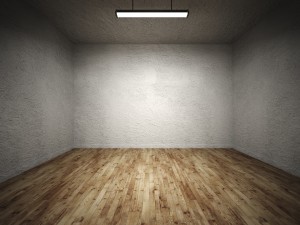
13th September 2018
How to create atmosphere in an empty room
Bringing the past to life when there are only limited visual cues is a challenge.
Think of a visit to a country house, a castle or a cathedral and you’ll perhaps think of the grand buildings themselves. And also their splendid interiors – lavish furnishings, opulent furniture and stunning decoration. We know that visitors enjoy visiting these places and that they often appreciate being helped around them with an audio or multimedia guide, drawing their attention to some of the features of the property.
But some spaces are a little more challenging to interpret for the visitor, especially if they have been stripped of all their fixtures and fittings. Whether it be fire, pillage or just being left to ruin, some rooms don’t have as many visual cues for us to work with when we’re creating content for visitors. It can be difficult to give visitors a sense of what a space was once like when there’s very little to see apart from a cold stone floor and an unframed window.
So here are our top tips for bringing life to an empty space, using handheld multimedia experiences.
Recreate the sound of a scene
Soundscapes are a great way to bring atmosphere to a room when we have some evidence – or at least a good hunch – about what a space was once used for. Creating a soundscape is a bit like making a collage. In the sound editing suite we blend historically authentic sound effects with music and snippets of voices to create a continuous background sound. This can be played from speakers in the room – either continuously or triggered by visitors when they enter – or via portable headphones. They can also form the backdrop for a conversation which you might want to layer over the top.
Soundscapes can work just as well in both small and large spaces – anything from a quiet moment of solitude or prayer to a large event such as a concert or a coronation.
Put on a party
If the space was once used for events, recreating the sound or visuals of a celebration such as a banquet or feast can be a great way to bring a room to life. At Eltham Palace in London we filmed a 1930s band for use on the handheld multimedia guide there, helping visitors to get into the party spirit and to step back in time.
Quote me
First-person quotations from real people are a good way to bring real life events to your audience when read aloud by character actors and voice over artists. If you can get hold of an accurate quotation they add another layer of authenticity to the visitor experience. A quotation might come from one person – perhaps from a letter, diary or speech – or could be a conversation between two characters. Overheard backroom chats between members of household staff can be fun to listen in on, but an argument is even better! Either way it’s important to let visitors know whether the words they are hearing authentic or if we’ve used a little creative licence.
Focus on what visitors can see
While it might not look like much, there is often some small detail that can act as a starting point for a commentary in empty room. Historic graffiti carved into wood or stone give us a direct link to the people of the past and are hooks that can be used as the starting points of great storytelling.
Even if there’s not much to look at, asking visitors to stand on the spot where history happened can encourage them to understand the importance of a place. Ask them to look at the view out of a window and paint a picture in their minds of what it looked like 100, 1000 or 10,000 years ago.
Augmented reality
It’s easier than ever to show people what a space once looked like on a handheld device. Ask your visitors to hold their phones or tablets upright and to move them around the room. They’ll be amazed as they see the original wall coverings, fixtures and fittings appear on the screen.
Keep it focused
One of the golden rules of audio guide writing is to not write about what the visitor cannot see. Where there’s not much to see, we have to use our creativity to help the visitor understand a space. Reviewing any curatorial research with an open-mind about what might end up being presented is a good starting point. But a word of warning – don’t let the creativity get out of hand. All the content we create needs to be related back to the property we are stood in and the visitor and learning outcomes that have been set for the project.
Play on the emptiness of a space
Sometimes a pared back commentary, delivered in the right way by a narrator, can be very effective in an empty room. Tell your visitors a spooky story accompanied by a creaking door and a hooting owl and they’ll feel the chill run right down their spine.
Great storytelling is at the heart of what we do and the expert teams at ATS can advise on the best way to bring your story to life for your visitors so please get in touch and we can discuss how ATS can help with your next project!


